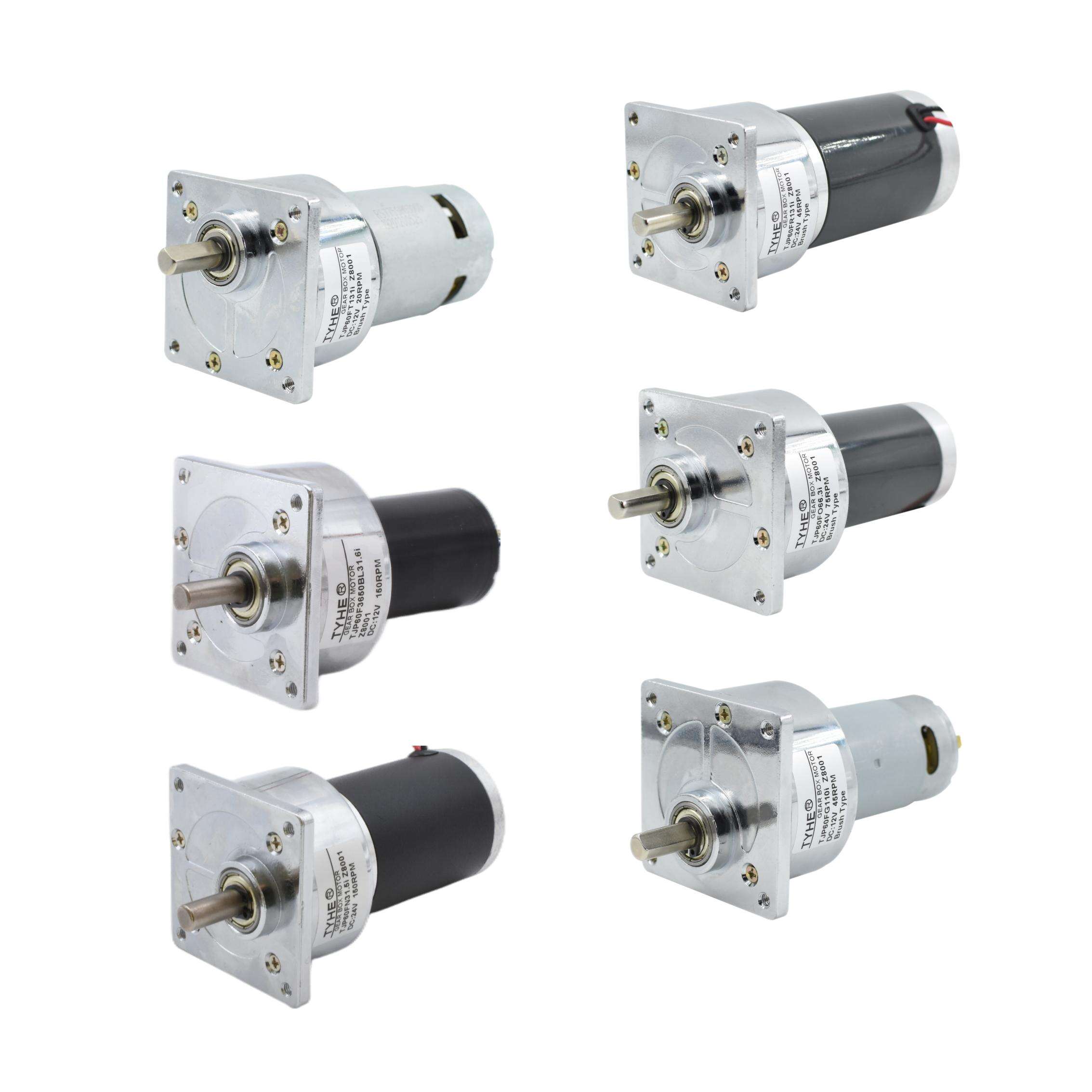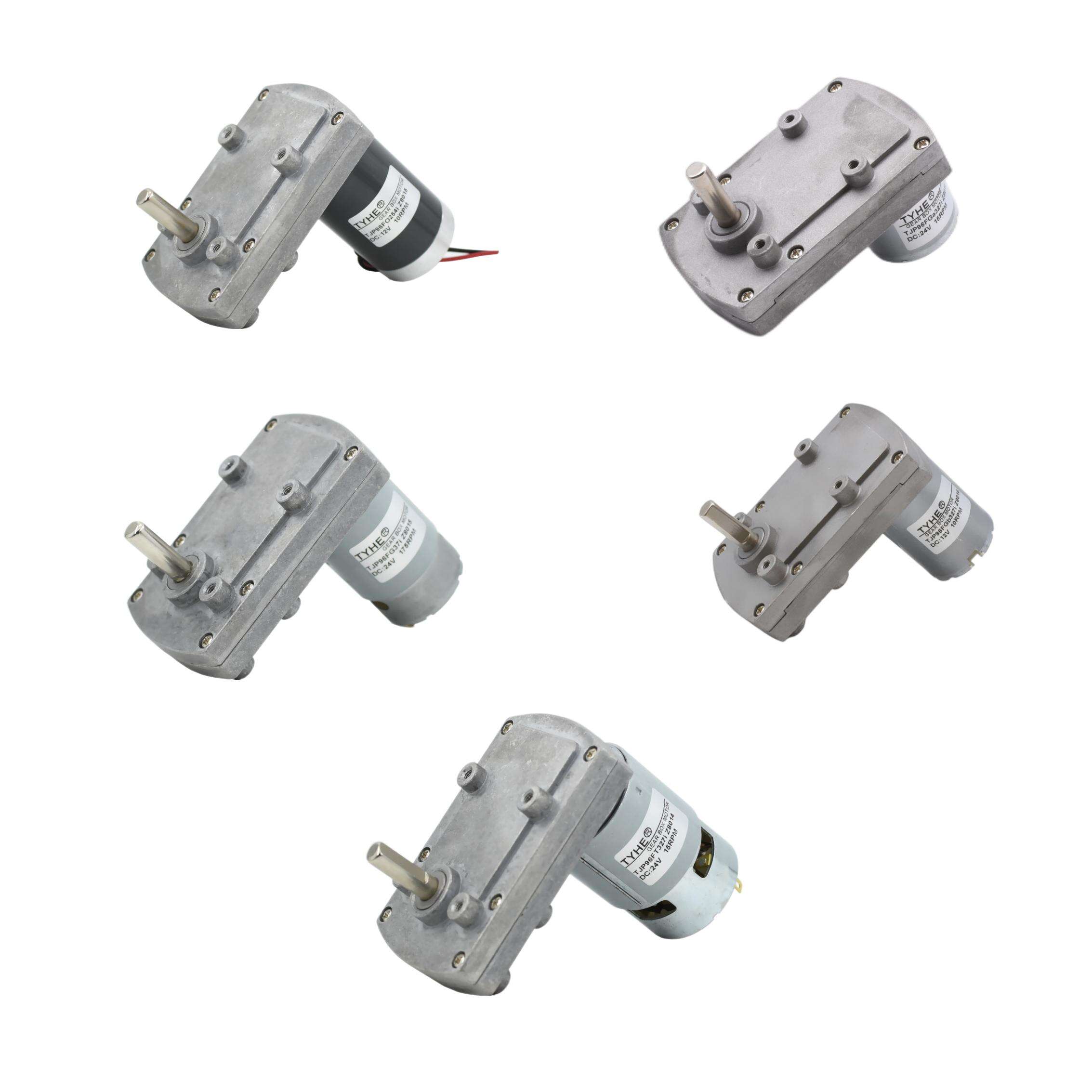Common DC Motor Problems and How to Fix Them
A DC Motor is one of the most widely used types of electric motors, known for its simplicity, controllability, and reliability. From industrial machinery and conveyor belts to automotive systems and household appliances, DC motors play a crucial role in powering mechanical movement. Despite their durability, they can develop faults over time due to wear, improper use, environmental factors, or electrical issues.
Knowing the most common DC Motor problems and their solutions is essential for maintenance technicians, engineers, and even hobbyists who rely on these motors for various applications. This guide covers typical mechanical and electrical issues, diagnostic tips, preventive maintenance practices, and step-by-step solutions for repairing or mitigating faults.
Understanding How a DC Motor Works
A DC Motor converts electrical energy from direct current into mechanical energy through the interaction of a magnetic field and current-carrying conductors. Its main components include:
Armature – The rotating coil or core that carries current.
Commutator – A rotary switch that reverses the current direction in the armature windings.
Brushes – Carbon or graphite contacts that maintain electrical connection between the stationary and rotating parts.
Field Windings or Permanent Magnets – Generate the magnetic field needed for motor operation.
Bearings – Support the rotor and reduce friction.
Understanding these components helps in diagnosing faults because each problem typically affects specific parts of the motor.
Common DC Motor Problems and Solutions
1. Motor Fails to Start
Possible Causes
Blown fuse or tripped circuit breaker.
Loose or broken power supply connections.
Worn-out brushes.
Open circuit in armature or field windings.
Fix
Check and replace blown fuses or reset the breaker.
Tighten or replace damaged wires and connectors.
Inspect brushes for wear; replace if they are below the manufacturer’s recommended length.
Test armature and field coils with a multimeter for continuity; replace or rewind if open.

2. Motor Runs but at Low Speed
Possible Causes
Low supply voltage.
Excessive load on the motor.
Brush contact problems.
Weak field winding.
Fix
Measure the supply voltage and correct any deficiencies.
Reduce the load or check for mechanical binding in the driven equipment.
Clean and re-seat brushes to ensure proper contact with the commutator.
Test the field winding for resistance; repair or replace if necessary.
3. Excessive Sparking at the Brushes
Possible Causes
Worn brushes or damaged commutator segments.
Incorrect brush spring tension.
Dirt, oil, or carbon buildup on the commutator.
Fix
Replace worn brushes with correct-grade replacements.
Adjust spring tension according to specifications.
Clean the commutator with fine sandpaper or a commutator stone; never use emery cloth as it can damage copper.
4. Overheating
Possible Causes
Overloading or operating at high current for prolonged periods.
Blocked ventilation or cooling fans.
Electrical short circuits.
Fix
Reduce the load to within rated capacity.
Clear air vents and ensure fans are working properly.
Inspect for shorted windings or damaged insulation and repair as needed.
5. Unusual Noises
Possible Causes
Worn or dry bearings.
Loose mounting bolts.
Rotor imbalance.
Fix
Lubricate bearings with appropriate grease or replace them if damaged.
Tighten all mounting hardware.
Balance the rotor if vibration is excessive.
6. Vibration
Possible Causes
Misalignment between motor and driven equipment.
Worn bearings.
Uneven wear on commutator or armature.
Fix
Align the motor shaft and coupling with the driven equipment.
Replace worn bearings.
Resurface or replace the commutator if needed.
7. Rapid Brush Wear
Possible Causes
Poor brush grade for the application.
High humidity causing corrosion.
Rough commutator surface.
Fix
Use manufacturer-recommended brush material.
Store and operate in controlled humidity conditions.
Resurface the commutator to a smooth finish.
8. Motor Stops Intermittently
Possible Causes
Loose electrical connections.
Overheating causing thermal protection trips.
Faulty armature winding.
Fix
Inspect and tighten all wiring.
Check load and cooling systems to prevent overheating.
Test armature for shorts or opens; repair if necessary.
Diagnostic Methods for DC Motor Problems
Visual Inspection
Look for obvious signs such as burnt smell, discoloration, worn brushes, loose connections, or damaged insulation.
Electrical Testing
Continuity Test – Checks if windings are intact.
Insulation Resistance Test – Measures insulation health using a megohmmeter.
Voltage and Current Measurement – Compares against rated values to detect overloads or voltage drops.
Mechanical Testing
Listen for abnormal noises.
Check shaft alignment and bearing condition.
Inspect the commutator for wear patterns.
Preventive Maintenance for DC Motors
Proper maintenance can significantly extend the lifespan of a DC Motor and reduce unexpected downtime.
Regular Brush Inspection – Replace brushes before they are worn beyond the limit.
Commutator Maintenance – Keep it clean and smooth to reduce sparking.
Lubrication – Follow the manufacturer’s schedule for bearing lubrication.
Cooling System Checks – Ensure air passages and fans are free from dust and debris.
Load Monitoring – Avoid overloading beyond rated capacity.
Safety Considerations When Repairing a DC Motor
Always disconnect the motor from the power supply before inspection or repair.
Discharge any capacitors in the system to avoid electric shock.
Use insulated tools and wear protective equipment.
Follow lockout/tagout procedures in industrial environments.
When to Repair vs. Replace
Not all DC Motor problems justify repair. Consider replacing the motor if:
The cost of rewinding exceeds half the price of a new motor.
The frame or key mechanical parts are damaged beyond repair.
Efficiency has significantly declined due to age and wear.
Conclusion
A DC Motor is a reliable and versatile machine, but like any mechanical device, it can encounter problems over time. Common issues such as failure to start, low speed, sparking, overheating, unusual noises, and vibration can often be traced to specific causes and resolved with proper troubleshooting. By combining regular preventive maintenance with timely repairs, users can maximize motor life, improve operational efficiency, and reduce costly downtime.
FAQ
Why is my DC Motor sparking excessively?
Excessive sparking is often due to worn brushes, improper spring tension, or a dirty commutator. Cleaning and replacing components usually fixes the issue.
Can I run a DC Motor without brushes?
No, brushed DC motors require brushes to conduct current to the armature. Brushless DC motors use a different design without brushes.
How often should I replace brushes in a DC Motor?
This depends on usage, but regular inspections every few hundred operating hours will indicate when replacement is needed.
Why does my DC Motor overheat?
Overheating is usually caused by overloading, blocked ventilation, or electrical faults. Reducing the load and ensuring proper cooling can prevent damage.
Is it worth repairing an old DC Motor?
If the repair cost is less than half the price of a new motor and the frame is in good condition, repairing is often cost-effective.


